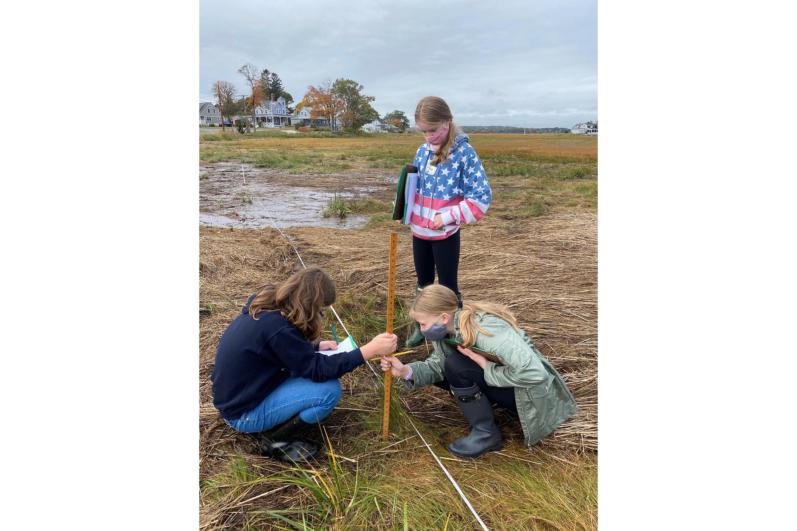Inspiring students in Beverly to change the world
How does a school fuel the imagination of a student to ask questions, to seek answers, to put forth a personal best effort, to have determination and resilience to achieve a goal? At the Saints Academy, we have found the answer lies in engaging students in the learning process by using an investigative approach to learning. Students are encouraged to examine concepts, formulate a hypothesis, and test their reasoning. During the engineering component, students connect abstract concepts to real world issues through the projects, which require planning, designing, and construction while searching for answers to the problem being investigated. By doing this, students draw correlations between concepts studied and the value of those concepts in the world of the future. This is the foundation of the middle school science program at the Saints Academy.
To accomplish this goal, the Saints Academy partners with local businesses and industries to give the students meaningful hands-on experiences. For the past seven years, the sixth grade has worked with Mass Audubon, collecting data regarding invasive plants and the effects of climate change at the marsh located at Conomo Point in Essex. This project forms the basis for their environmental study. More recently, the eighth grade has studied the chemistry of the marsh, sampling nitrates in the water, which are important to the survival of the marsh plants. They also use GPS technology to document marsh loss and die back. This project emphasizes the fact that science is a blend of many areas of study. Here, environmental science blends with and is supported by the study of chemistry and the use of technology.
The R and D Company of miniPCR is another example of partnership and is crucial to the eighth grade's study of microbiology. Students learn how to use the school's PCR and thermocycler to investigate and detect the presence of substances such E.coli in food in a laboratory setting. They practice skills such as pipetting and mixing reagents in the same way that lab workers process COVID samples using PCR. Microbiology lays the foundation for an enrichment challenge offered at the Saints Academy. The students use their knowledge of microbiology and PCR to compete in a national competition sponsored by NASA and miniPCR called Genes in Space. Over the past five years, they have probed many questions, such as the use of microgravity in the treatment of cancer and investigating the question of how to grow food in the absence of an atmosphere. The Saints Academy has been honored to win the Junior Science category during one of those years.
The Weston Observatory at Boston College is another partner. The Saints Academy owns a seismograph that records seismic activity of both earthquakes and volcanoes and reports this information back to the observatory. The middle school monitors the seismograph, writes and publishes blogs explaining the findings and maintains a log of all recorded activity since 2017. A real time visual feed of the seismic readings is also posted to the website.
The Saints Academy's greenhouse allows the seventh-grade students to explore a variety of concepts, such as composting, growing food from scraps, propagating plants and engineering hydroponics. In the past, The November 11 Foundation of veterans have used the site to grow food over the summer, allowing veterans the opportunity to heal through nature.
All of these experiences and many more reinforce the fundamental belief that the study of science is mankind's attempt to understand the awesome power of God. At the Saints Academy, we believe this is an incredible way to interact with our Creator and in doing so, inspire the future generation of leaders.
MARILU POMEROY IS MIDDLE SCHOOL SCIENCE TEACHER AT THE SAINTS ACADEMY OF BEVERLY.




















